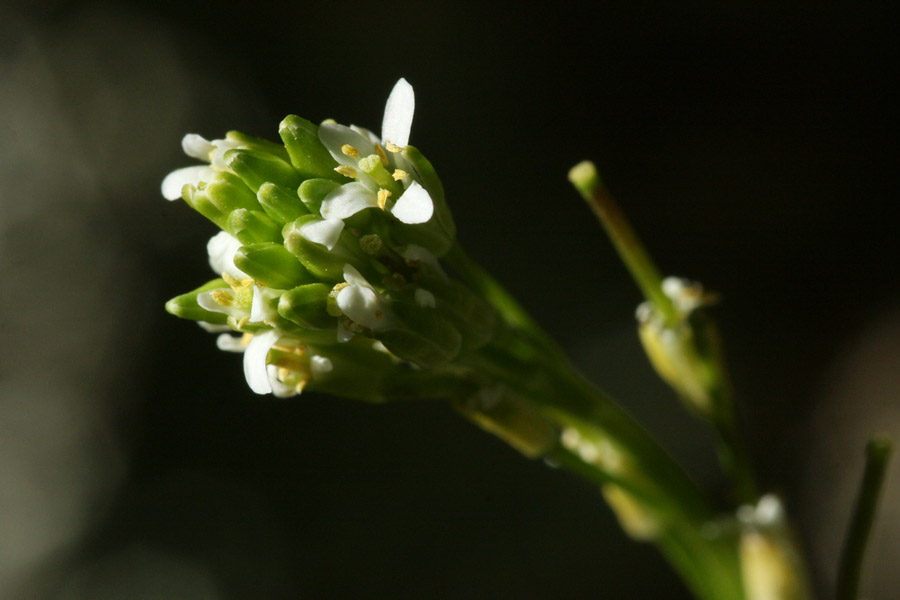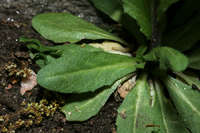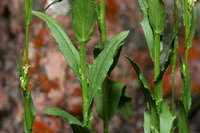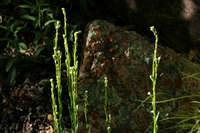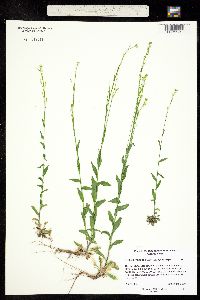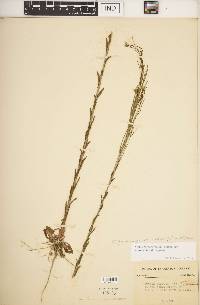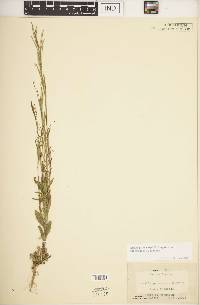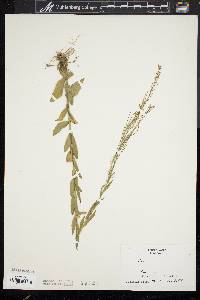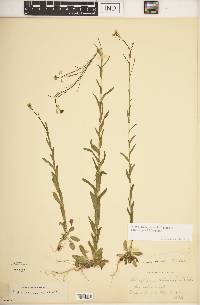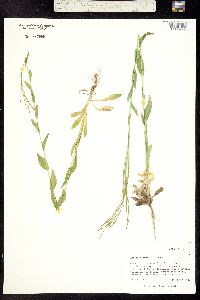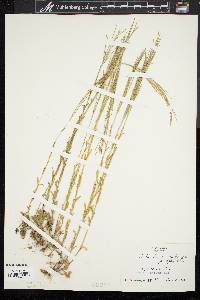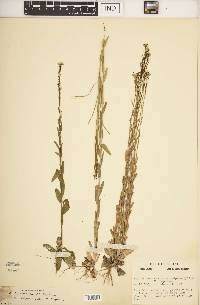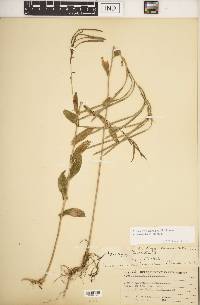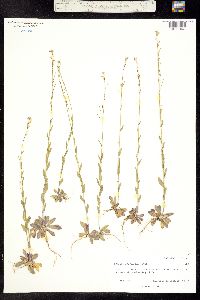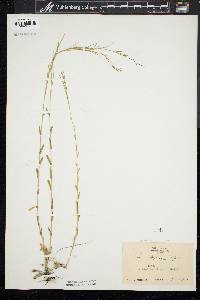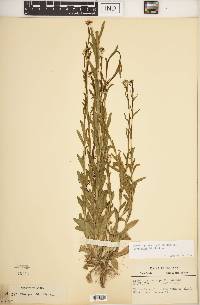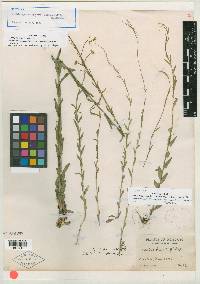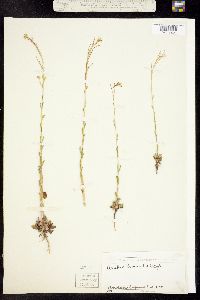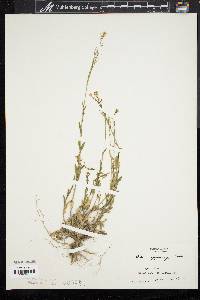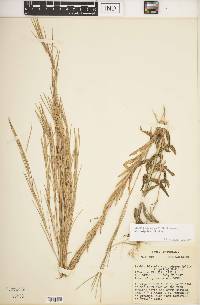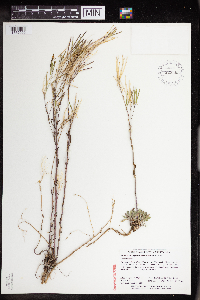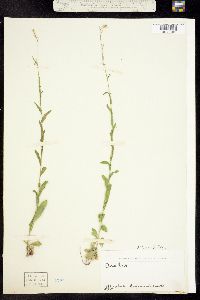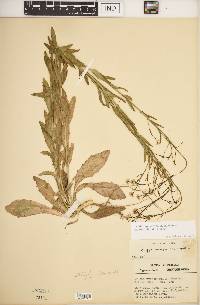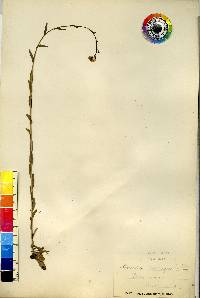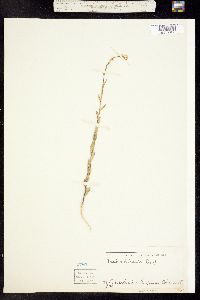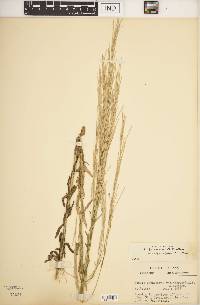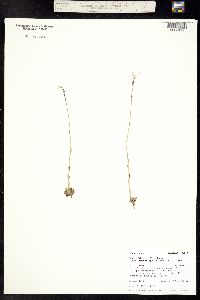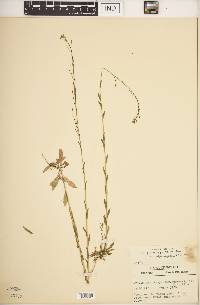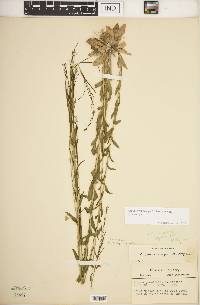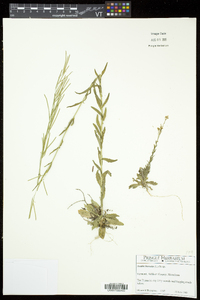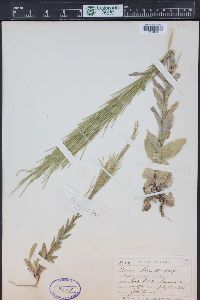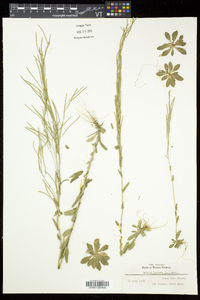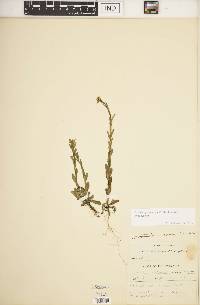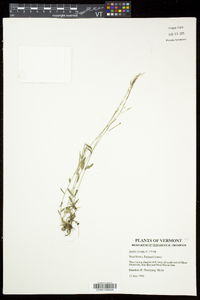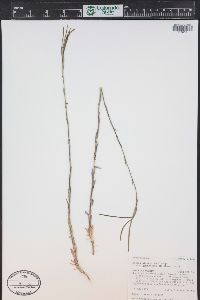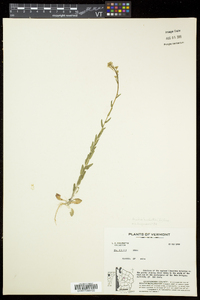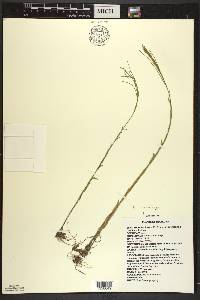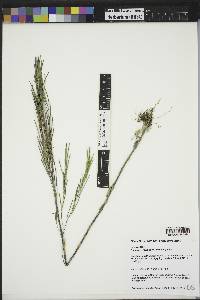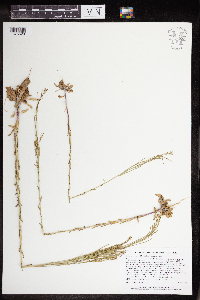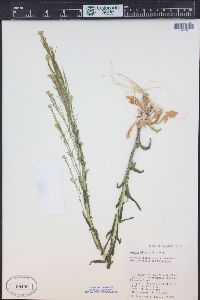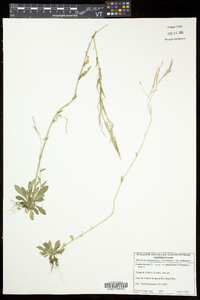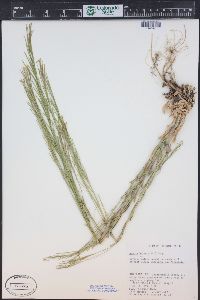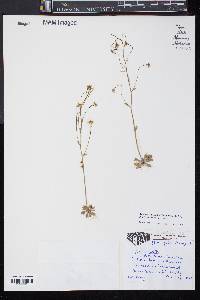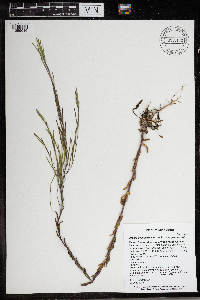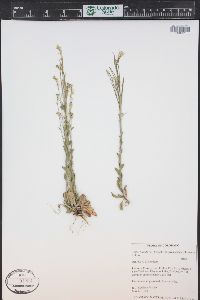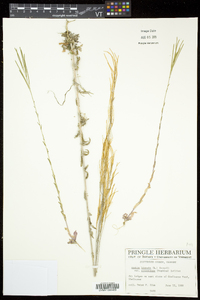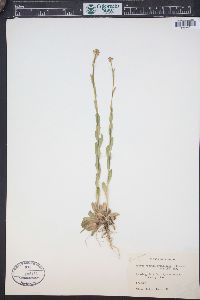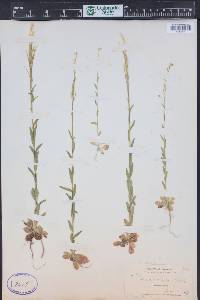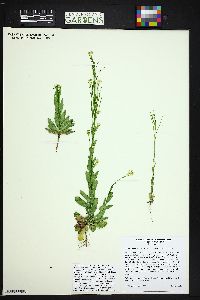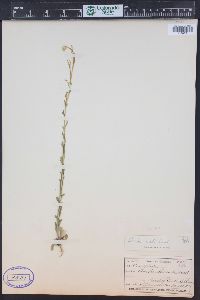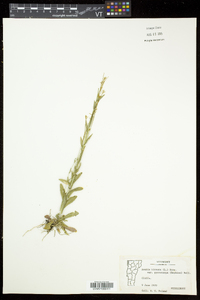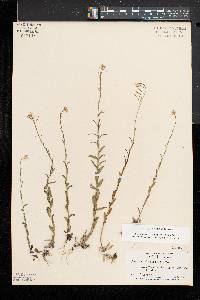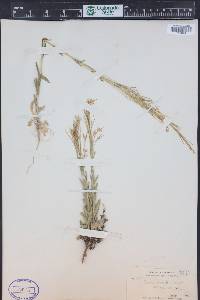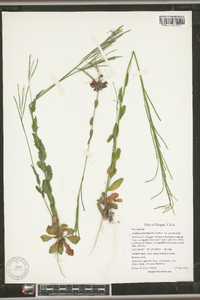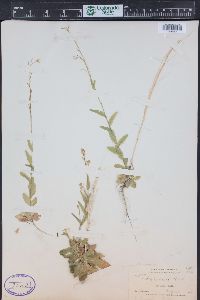Arabis pycnocarpa
|
|
|
|
Family: Brassicaceae
Hairy Eared Rockcress, more...creamflower rockcress
[Arabis hirsuta subsp. pycnocarpa (M. Hopkins) Hultén, moreArabis hirsuta var. adpressipilis (M. Hopkins) Rollins, Arabis hirsuta var. pycnocarpa (M. Hopkins) Rollins, Arabis ovata sensu Small, non Michx.] |
Biennials or perennials; (caudex branched); usually densely hirsute (at least basally), rarely glabrescent, trichomes simple mixed with stalked or sessile, forked ones. Stems simple or several from base (rosette), erect, often branched distally, 1-8 dm, (pilose with trichomes appressed, malpighiaceous, or minutely stalked, forked, or hirsute basally with trichomes simple and minutely stalked, forked, sometimes almost exclusively pubescent with forked submalpighiaceous trichomes). Basal leaves: petiole 0.5-2 cm, (ciliate or not); blade spatulate, oblanceolate, or oblong, (0.8-)1.5-8 cm × (5-)10-25 mm, margins entire, repand, or dentate, apex obtuse or acute, surfaces sparsely to densely pubescent, trichomes sessile or stalked, simple or forked, and/or stellate. Cauline leaves (7-)10-45(-61), (overlapping or not); blade ovate to oblong or lanceolate, rarely linear, (1-)1.5-6(-8) cm × (1-)3-20(-25) mm, base subcordate or auriculate (auricles obtuse or subacute), margins dentate or entire, apex acute or obtuse, surfaces hirsute or adaxially glabrescent. Racemes often simple. Fruiting pedicels erect to erect-ascending, (2-)3-8(-12) mm (glabrous or sparsely pubescent). Flowers: sepals oblong, 2.5-4 × 0.5-1.5 mm, lateral pair not saccate basally; petals white, linear-oblanceolate or narrowly spatulate, 3.5-5(-5.5) × 1-2(-2.5) mm, apex obtuse; filaments 2.5-4 mm; anthers oblong, 0.7-1 mm. Fruits erect to erect-ascending, (often appressed to rachis), torulose, (3.5-)4-6(-6.5) cm × 0.8-1(-1.2) mm; valves each with obscure or somewhat prominent midvein extending to the middle; ovules (54-)60-86 per ovary; style (0.2-)0.5-1(-1.3) mm, (slender). Seeds narrowly winged throughout, oblong or suborbicular, (0.8-) 1-1.5(-1.7) × 0.8-1.3 mm; wing to 0.2 mm wide distally. Biennial or perennial herb 20 - 80 cm tall Stem: upright, with stiff, appressed, pick-shaped hairs. Usually single but occasionally two or three arise from the base. Flowers: in loosely branched clusters, white or yellowish white, 3 - 5 mm long. Petals four. Stamens six. Fruit: a narrow pod, upright or pressed against the stem, 3 - 5 cm long, 0.5 - 1 mm wide, linear, flat. Seeds in one row. Basal leaves: short-stalked, oblong, hairy, in a rosette. Stem leaves: alternate, upright, clasping the stem, stalkless, 1 - 3 cm long, oblong to lance-shaped, toothed on lower leaves, becoming non-toothed on upper leaves, hairless or nearly so. Similar species: Regular A. hirsuta does not have appressed hairs. Flowering: mid-May to late June Habitat and ecology: Extremely rare in the Chicago Region because of the scarcity of its special habitats. It grows on shaded, moss-covered limestone boulders along the borders of streams in small rock canyons. It also grows on the vertical walls of limestone canyons. Another habitat is shaded floodplains. Near Romeoville in Will County, Illinois it is found on a disturbed gravelly prairie. This variety has also been observed growing in sandy soil. Occurence in the Chicago region: native Etymology: Arabis comes from the Latin word for Arabia (where some species of these herbs originated). Hirsuta means hairy. Adpressipilis means "with adpressed (flattened) hairs." Author: The Morton Arboretum From Flora of Indiana (1940) by Charles C. Deam Infrequent to rare in the state and probably absent from some of the central counties. It grows in sandy soil in alluvial bottoms, in crevices of rocks, and on rocky slopes and high banks of streams. Since all of my specimens are from the borders of streams and lakes, its affinity for them is apparent. This species is variable in its pubescence which is sometimes restricted to the lower part of the plant. Its pubescence, strict habit, and its habit of sending up several erect branches from the base usually identify it. ...... Indiana Coefficient of Conservatism: C = 5 Wetland Indicator Status: FACU Diagnostic Traits: Rosette leaves dentate or entire, to 8 cm long; stem leaves auriculate; petals 4, white, mostly 3–5 mm long; fruit pods flattened, mostly 4-6 cm × 0.7-1 mm; seeds to 1.5 mm long. Most Indiana populations are readily assigned to var. adpressipilis; however, several IND specimens seem intermediate with var. pycnocarpa. |

